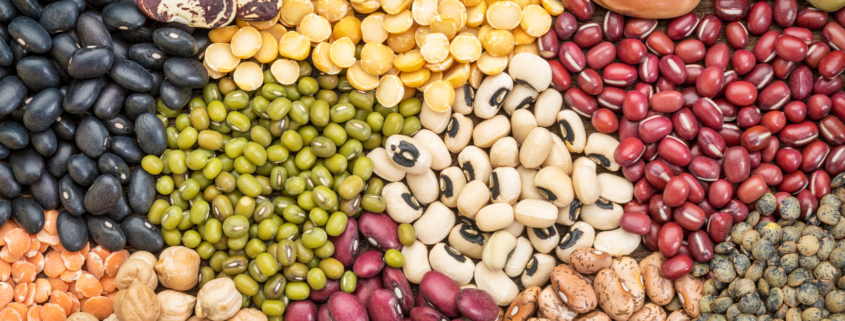Beans: Simply Delicious and Naturally Nutritious!
Written by Lori Bumbaco, MS, RDN, CSO, LDN, Oncology Dietitian
Beans 101
Nutrition experts often recommend that we eat beans as part of an overall healthy diet. That’s because beans are nutrition superstars! Not only are they a planet friendly choice but eating them is associated with numerous health benefits. Beans are a perfect pantry staple because they can add texture, nutrition, and are mild in flavor making them the perfect ingredient to a variety of recipes. An added bonus is that beans are inexpensive and easy to prepare!
Nutrition
All types of beans, including black, cranberry, Great Northern, dark red kidney, light red kidney, white kidney, navy, pink, pinto, and small red, are good sources of protein, excellent sources of fiber, and many types are also good sources of potassium, zinc, iron, and folate. Some beans also contain magnesium and calcium. That’s why experts recommend that we eat 1 ½ – 3 cups of beans each week. However, only about 20% of Americans are reaching that goal. If you are concerned about salt in canned beans, have no fear! Draining and rinsing salted canned beans removes about a third of the sodium. Alternatively, you can look for “no salt added” or “low sodium” canned beans instead.
Beans and Our Health
The fiber in beans can help to lower cholesterol, manage blood sugar levels, and also helps with bowel regularity. Evidence suggests that fiber is associated with a decrease in the risk for colorectal cancer. Also, people who eat more fiber are more likely to manage their weight with a smaller waist circumference. When we lower the amount of fat in our body, it helps protect us against 13 different types of cancer.
Beans in the Kitchen
Beans are touted for their versatility. Many beans can be used interchangeably in recipes. For example, if a recipe calls for white beans, you can use Great Northern Beans, Navy Beans, or Cannellini Beans. Canned beans are a convenient option, but you might be surprised how easy it is to prepare a batch of beans from the dried version. Beans are used throughout the world in various cuisines. There’s Oaxacan Black Beans, Brazilian Feijoada, Tuscan Ribollita, Greek Gigantes, Indian Rajmah, Succotash, Louisiana Red Beans and Rice, and so much more!
Beans are an example of a plant-based protein. In every 1 cup of beans, there is about 15 grams of protein. You can use beans to replace meat in many recipes or use beans to displace some of the meat in your recipe. Below are some examples of how to use beans to stretch out most recipes.
We all know the fundamentals of chicken noodle soup – onion, carrot, celery, chicken, noodles, and broth. But if you’re running low on chicken, you can supplement your soup with a can of drained garbanzo beans. Garbanzo beans have a meaty flavor and great texture making them the perfect addition to soup. They provide fiber, nutrients, and stretch your soup allowing you to save money.
When time is limited on busy nights, tacos are an easy choice. Many taco recipes begin with 1 pound lean ground beef and a packet of taco seasoning. To make more tacos out of this simple combination, add a can of drained black beans to the seasoned taco meat. This third ingredient makes all the difference in stretching your protein dollar.
Beans are one way we can add nutrients to a cancer protective diet. With all of the options available and how versatile beans are in the kitchen, eating beans are a simple and delicious way to optimize our nutrition.
Fun Quiz: What’s your bean personality?
https://beaninstitute.com/discover-your-bean-personality/
Resource
The Bean Kitchen: Passport to Flavor https://www.ciaprochef.com/northarvest/



